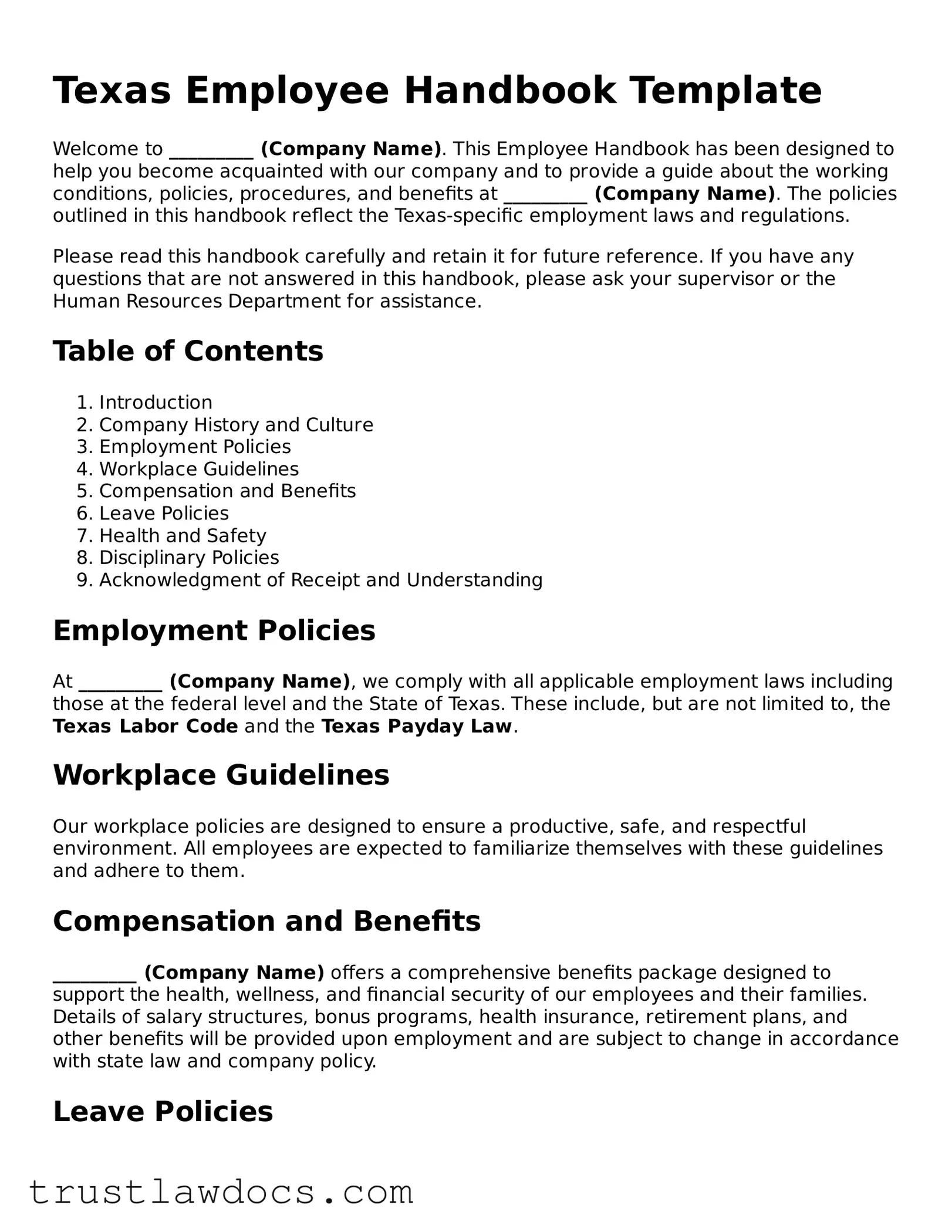Texas Employee Handbook Template
Welcome to _________ (Company Name). This Employee Handbook has been designed to help you become acquainted with our company and to provide a guide about the working conditions, policies, procedures, and benefits at _________ (Company Name). The policies outlined in this handbook reflect the Texas-specific employment laws and regulations.
Please read this handbook carefully and retain it for future reference. If you have any questions that are not answered in this handbook, please ask your supervisor or the Human Resources Department for assistance.
Table of Contents
- Introduction
- Company History and Culture
- Employment Policies
- Workplace Guidelines
- Compensation and Benefits
- Leave Policies
- Health and Safety
- Disciplinary Policies
- Acknowledgment of Receipt and Understanding
Employment Policies
At _________ (Company Name), we comply with all applicable employment laws including those at the federal level and the State of Texas. These include, but are not limited to, the Texas Labor Code and the Texas Payday Law.
Workplace Guidelines
Our workplace policies are designed to ensure a productive, safe, and respectful environment. All employees are expected to familiarize themselves with these guidelines and adhere to them.
Compensation and Benefits
_________ (Company Name) offers a comprehensive benefits package designed to support the health, wellness, and financial security of our employees and their families. Details of salary structures, bonus programs, health insurance, retirement plans, and other benefits will be provided upon employment and are subject to change in accordance with state law and company policy.
Leave Policies
We provide various leaves in compliance with the Texas Family Leave Act (TFLA) and the federal Family and Medical Leave Act (FMLA), allowing eligible employees to take unpaid, job-protected leave for specified family and medical reasons.
Health and Safety
Ensuring a safe work environment is a priority at _________ (Company Name). Our policies and procedures are designed to promote safety in the workplace and are in compliance with the Occupational Safety and Health Administration (OSHA) standards and the Texas Workers' Compensation Act.
Disciplinary Policies
Disciplinary actions at _________ (Company Name) are aimed at fairly addressing workplace issues that may arise. This includes but is not limited to misconduct, performance issues, and violation of company policies. We maintain a structured disciplinary procedure to ensure fair treatment for all employees.
Acknowledgment of Receipt and Understanding
Each employee is required to sign an acknowledgment form confirming they have received, read, understand, and agree to comply with the company's Employee Handbook and any future amendments.
